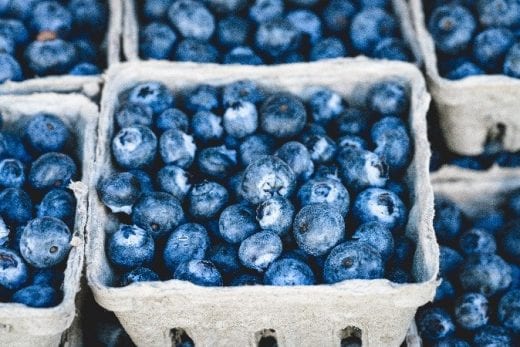 If you have a large garden or come across a large quantity of fresh fruit or vegetables, you may want to choose freezing as your method of preservation. When freezing foods at home, remember to:
If you have a large garden or come across a large quantity of fresh fruit or vegetables, you may want to choose freezing as your method of preservation. When freezing foods at home, remember to:
- Freeze fresh produce as quickly as possible, preferably within 24 hours of harvest or purchase. Choose fruits and vegetables that are in good condition, ripe and free of mold. Cut out any portions with insect damage or bruises.
- Rinse off all dirt under cool running water.
- Choose an up-to-date tested recipe, such as from the National Center for Home Food Preservation website: nchfp.uga.edu/how/freeze.html Or contact your local Extension office for how-to details. Follow the recipe directions exactly. For example:
- Follow recommended times for blanching and cooling, if needed. Blanching involves putting certain kinds of vegetables in boiling water or steam for a short time, in order to prevent loss of flavor, color, texture and nutrients during frozen storage.
- If recommended, add lemon juice or powdered ascorbic acid or citric acid to prevent darkening. Fruits such as apples, apricots, peaches and pears darken when cut and exposed to air.
- If using a sugar substitute, choose a recipe designed for use with it rather than with sugar, in order to be assured of success.
- Use food storage containers designed for freezing foods.
- Label and date foods. Use them within 8 to 12 months.
Recipe: How to Freeze Ripe Strawberries without Added Sugar 1. Read step number 1, above. 2. Rinse berries and remove stems. Slice or leave whole. 3. Place berries in a single layer in a shallow baking pan. Place pan in freezer. 4. When berries are frozen, transfer to freezer containers. Seal, label and date. Place in freezer. Use within one year.
By: Ashley Svaty
 Call us with any questions
Call us with any questions So you saved your tomato crop in the freezer. Can those frozen tomatoes be canned?
So you saved your tomato crop in the freezer. Can those frozen tomatoes be canned? hunting season approaches, there are many ways to preserve the meat. One of those is dehydrating meat jerky.
hunting season approaches, there are many ways to preserve the meat. One of those is dehydrating meat jerky.
